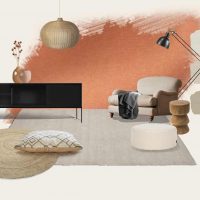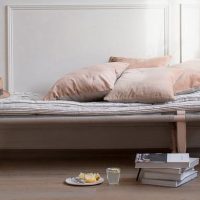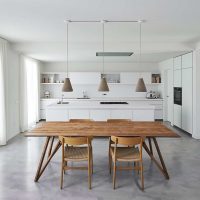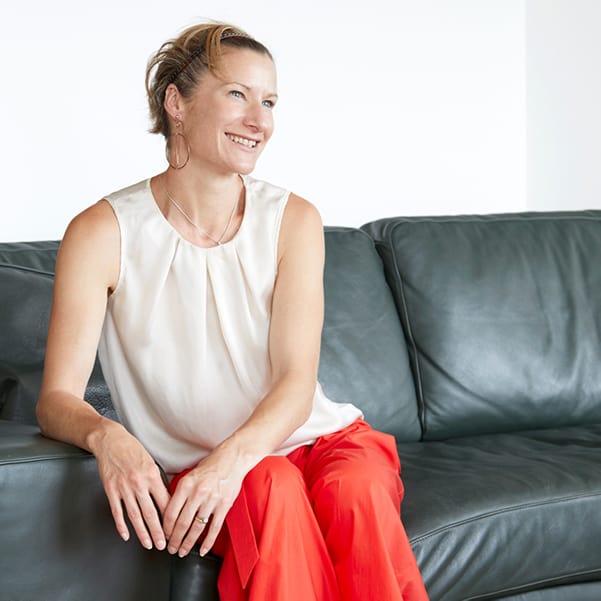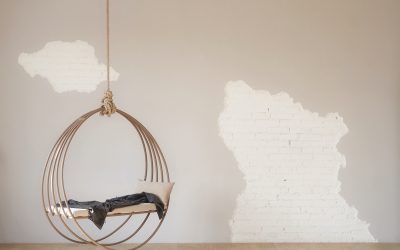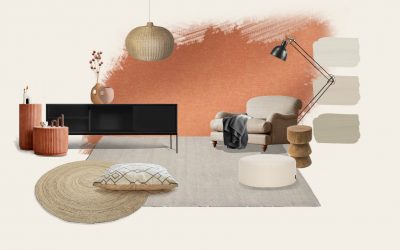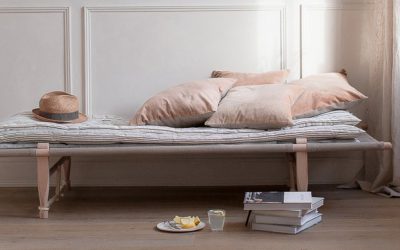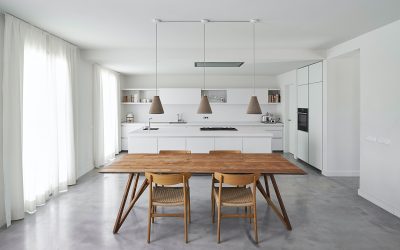Biophilic Design – Home Interiors brought to life with the stunning beauty of nature
Biophilic Design has been well and truly installed onto the design world stage, from city planning & architecture, through to interiors & product design. Plants of all shapes and sizes drape the sides of buildings, bloom through internal courtyards and dangle from shelving units and desks.
Biophilic design is, however, far from a new concept. Granted its name by psychologist Erich Fromm in 1964 when he described it as “the passionate love of life and all that is alive”. Biophilic Design is in essence the incorporation of nature and natural elements, materials and forms into our architecture and interior spaces. Recent studies have shown convincing evidence of the positive benefits of human interaction with nature, while extensive research indicates that it can improve productivity, lower stress levels, enhance learning comprehension, and increase recovery rates from illness.
There are a number of factors that combine to form the overall principles of biophilic design. The following elements all play a roll in helping us to simulate the natural world within our home environments:
Natural Lighting & Rhythms
Our natural body clock runs off a daily cycle that controls our sleep, hunger and alertness. While this clock has the ability can regulate itself, it can also be negatively affected by external cues such as artificially lighting, overheating and overuse of technology at night time. The answer does not necessarily lie in the addition of lots of external glazing as too much sunlight can cause dazzling and unregulated heat.
Instead look to introducing indirect daylight into a space by creating, internal courtyards, skylights, clerestories (high-level windows) or semi-transparent glazed structural surfaces such as a screen partition, Glass Block or ‘pop-out reading windows. Study how the sunlight rotates around the building and use that knowledge to created interesting internal angles that maximise the natural flow of daylight into the space.
Planting and Greenery

There is no doubt but that indoor planting has been one of the largest growing interior trends over the past number of years. We are all well versed in the benefits of indoor plants on our well being both physically – as they purify the air, and mentally – through our positive association with nature. Plants are an easily attainable and affordable addition to any space. There is a never-ending array of beautiful indoor plants to suit a multitude of green-fingered styles from miniature cactus oasis through to the oversized potted plants up to indoor living walls.
The key to keeping them alive is to know your home environment, especially access to light, temperature and humidity and understanding the individual needs of the plant. Ideally when introducing plants into a room, more is more, don’t just rely on one plant to create the optimum ‘green’ effect, instead group alternative styles and shapes to enhance not only the benefits but also the look. Don’t just look on plants as another accessory but rather view them as you would the furniture that makes the room, be brave give them space and attention and the benefits will be rewarded threefold.
Natural Materials & Colours

One of my favourite designers who creates spaces that are not only stylish and contemporary but also comfortable, natural and welcoming is Sergey Makhno Architects. Among their guiding principles is a desire to “create comfort that will become near and dear “ There are no interior design trends on display in their creations, instead they ” respect (the) nature and create projects in collaboration with it. We choose natural materials and colours: wood, concrete, copper, clay, flax. We don’t process the textures. It’s a thing to look at and also feel the warmth of wood or the light coldness of the stone.
We find beauty around and complete it.” To my eye, this is perfection!….but whatever your taste there is no doubt that introducing a texture that nature has honed for millions of years into our homes can only add a layer of substance and synchrony as well as the benefits that a natural product free from CFC’s and harsh chemicals can bring. In our Sustainable Interior Design Guide, we looked at a range of natural wall finishes that bring texture and authenticity into our homes and we assess how they can be used to create a visually stunning and tactile backdrop to our home environment.
Naturalistic Shapes and Forms

The human brain is highly adapted to processing particular kinds of shapes in the natural world. In one ‘brain image study, tests found that viewing objects with sharp elements and hard corners activated the part of the brain associated with fear, while curves were not perceived as a threat. ( Biophilia: You + Nature + Home by Sally Coulthard ). Factual shapes such as the Golden spirals ie; conch shells, spiders webs or sunflower heads, and Curves ie; rock formations, hills, animal spines even leaf veins, ferns, and tree formations seem to stimulate our brains into feeling at ease and comfortable while also helping to regulate our emotions.
Look at opportunities to introduce curves into the architecture of a space by adding archways or curved recessed shelving that mimics the curved flow found in nature. There has been a resurgence in rounded furniture pieces on the market over the past year that can add an instant softness to any space. In our previous article on Circular Design, we looked at how circles and curves become a key interior design trend in 2020 and suggest ways in which one can incorporate this softer more welcoming profile into any home interior space.
Biomimicry

Biomimicry is defined as a “science that studies nature’s models and then imitates or takes inspiration from these designs and processes to solve human problems”. It leverages nearly 4 billion years of nature’s evolutionary problem-solving process to create high-performance and generally more sustainable designs and technologies. Biomimicry allows designers to adapt the same solutions to the built environment but in a fraction of the time.
For some true examples of its use may I suggest 10 instances of biomimicry in interiors there may well be some extreme cases in here but it may act as a catalyst to help you realise its influential impact. Alternatively …. venture outside and take a careful look at your surroundings, “LOOK UP” as my father always says, once you develop an eye, you’ll see inspiration everywhere. From carpet pattern and textures to furniture shapes and architectural detailing there is such an array of areas where incorporating natures finely tuned design models can only improve our build environment.
Water

For the majority of people, the image of the perfect relaxing holiday contains water of some form or another, be it the ocean lapping or a slow-flowing river or lake. There is little doubt that water has a profoundly positive effect on our brains and therefore plays a key role in contributing to the Biophilic environment. It is thought that the sound of moving water induces feelings of relaxation, calm and engages a part of the brain that allows for daydreaming and meditation or ‘soft focus’.
The challenge, however, is how to incorporate water into our everyday environment when many of the indoor off the shelf ‘water features’ are somewhat lacking in design aesthetics and continually running water is a somewhat costly exercise! If an indoor water courtyard or running fountain is beyond the scope of works, think simple, let light refract through an oversized clear glass vase, look to harness rainwater into your outdoor scheme or even mimic the presence of water through colour, pattern or light.
Nature by Nature itself
From a domestic and commercial interior design perspective, alongside the documented benefits of this design principle, Biophilic Design also lends itself to an element of playfulness. Nature, by nature itself, follow a number of set rules when it comes to the pattern but it also likes to break these up causing contrast and irregularities in, colour, size, shape etc. It is up to the designer to abide by these principles while simultaneously incorporating the freedom and juxtaposition it provides.
Such whimsical concepts can take the form of oversized Indoor trees, grass-covered seating, pop out glass boxes, driftwood pendant lights, shell inspired flooring patterns … the opportunities are endless and to back it up there is an ever-expanding array of fixtures and finishes both off the shelf or bespoke which a designer can access to sex up this look. In summary, Biophilic Design has given us the tools to rethink how we approach the design of our internal and external spaces for the benefit of our bodies our minds and our environment.
Biophilic Design is not just another passing trend but a practice that will become inherently more important in the future of design, interiors and architecture. Even more than this, it’s going to be one of the guiding principles. Let’s embrace it in all its goodness while enjoying it along the way.
One final thought is Biophilic Interior Design the same as Sustainable Interior or Vegan Interior Design? Glad you asked because we have an article on that very subject here.
At Yellow Brick Road Design – Devon-based Domestic Interior Design and Commercial Interior Design & Project Management, we love to push the boat out on both our Commercial Interior Design and Domestic Interior Design Projects. We look forward to forging new relationships and we aim to work with all of our clients to create that individual space that will help them stand out from the crowd.



